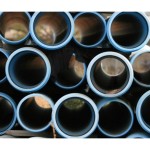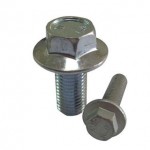The Types of Pipe Flanges

Pipe flanges connect pipes, valves, pumps and other equipment in a piping system. Flanges are usually welded or screwed into the systems and then joined with bolts. The eight types of pipe flanges are available in round, square and rectangular shapes.
Blind Flanges
A blind, or blanking, flange is a round plate with no center hold (but with bolt holes) that closes the ends of piping systems.
Lap Joint Flanges
Piping fitted with lapped pipe or with lap joint stub ends often use lap joint flanges. Also, systems frequently taken apart for inspection and cleaning often use lap joint flanges.
Orifice Flanges
Orifice meters that measure the flow rate of either gases or liquids use orifice flanges.
Reducing Flanges
When a change in diameter is required in a piping system, reducing flanges are used. A reducing flange has a specified diameter with a bore of a different, smaller diameter.
Slip-On Flanges
Slip-on flanges slide over the end of a pipe and are then welded into place. These flanges work well for low-pressure applications.
Socket Weld Flange
The socket weld flange is counter-bored to accept the pipe before being fillet welded. This type of flange is similar to a slip-on flange. The bore of the pipe and flange are the same, which provides good flow characteristics.
Threaded Flanges
Threaded flanges, which are threaded in the bore to match an external thread on the pipe, are attachable to a pipe without welding.
Weld Neck Flanges
Weld neck flanges have a long tapered hub and are often used for high-pressure applications. The pipe and flange bores match, which reduces turbulence and erosion inside the pipeline.










